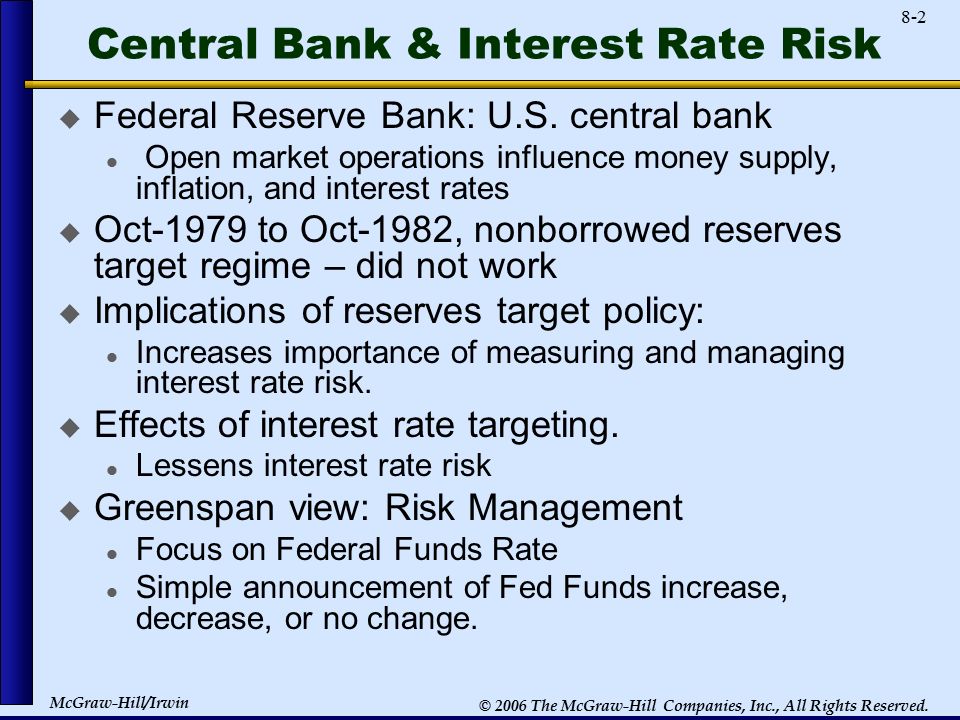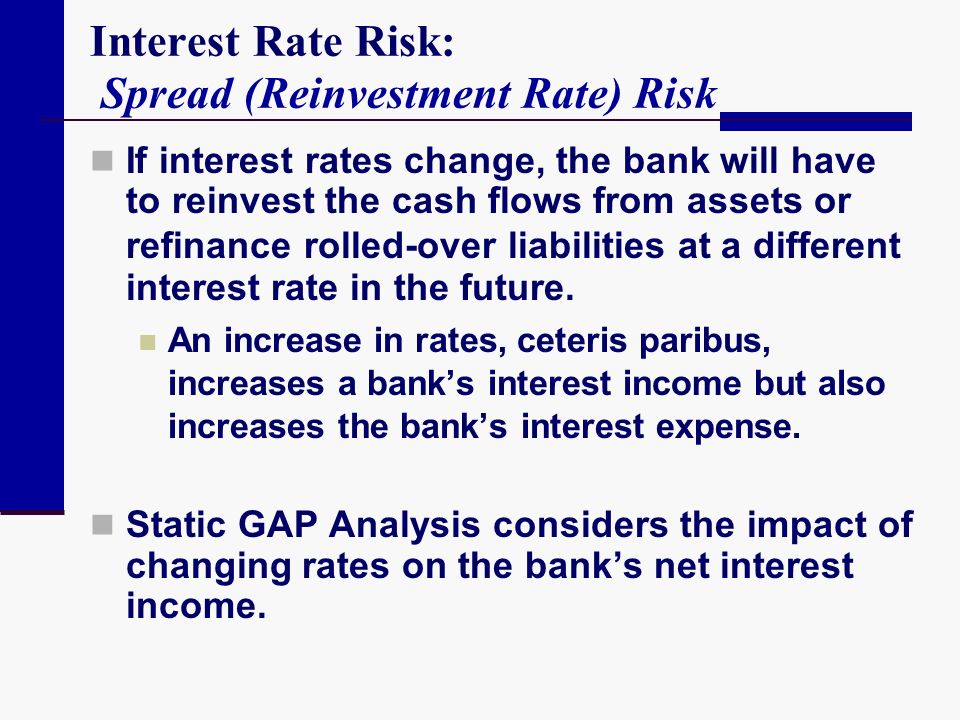Definition – what is interest rate risk ? Sources of interest rate risk. Impact of adverse movements in interest rates on organisations. Methods to measure interest rate risk.
Appendix Terminology – key terms which may be used.

The instructions in this directive should be used in the management of interest rate risk management per se, irrespective of whether the positions are part of the trading book or the banking book. Nevertheless, in view of the importance of interest rate risk in the banking book, this directive specifically includes instructions that . It is also possible to purchase instruments that cap interest rates at a maximum, floor them at a minimum or allow them to fluctuate within a pre-defined band. Deciding to fix, float or accept a defined range of possible interest rates is the definition of managing interest rate risk. Hedging a floating interest rate means deciding . The management of interest rate risk is an important part of corporate risk management.
The active management of interest rate exposure minimises the risk of incurring losses and opportunity costs from movements in interest rates.

Deciding how to hedge interest rate risk begins with a personal assessment: what kind of fixed income investor are you? The Federal Reserve may not have raised rates this month as many had anticipate but, by and large, most economists and market experts say rates are headed higher, and sooner . With an interest rate swap you can fix the amount of your monthly loan payments. A cap protects you efficiently against interest rate rises.
Customised solutions. Nordea has flexible solutions. Many translated example sentences containing interest rate risk management – German-English dictionary and search engine for German translations.
Borrowing at a floating interest rate exposes borrowers to interest rate risk, which in a rising interest rate environment leads to higher debt servicing costs. Interest Rate Risk Management. As the reference rate changes over time, borrowers who pay floating interest rates will see their interest payments . Section G of the FStudy Guide specifies the following relating to the management of interest rate risk: (a) Discuss and apply traditional and basic methods of interest rate risk management , including: i) matching and smoothing ii ) asset and liability management iii) forward rate agreements.
Learn how to mitigate the risk of rising or falling interest rates using some simple strategies. Accepting this risk is a normal part of banking and can be an important source of profitability and shareholder value. However, excessive levels of IRR can . Credit institutions are required to calculate, on a regular basis, the impact of a sudden and unexpected change in interest rates on their interest rate risk in the banking book and to report this to supervisors. This circular is currently .

To establish an effective interest rate risk management policy for the company, you should identify and quantify the interest rate risk in a dynamic and correct way. We support corporates to achieve this. Oliver Wyman recently performed an industry survey on interest rate risk management across a group of eighteen North American banks.
The survey set out to examine how banks are responding to uncertainty through their IRR management and measurement practices. We provide you with product information and advice on IRRM products, market information, economic data and forecasting, as well as. As part of its ongoing efforts to address international bank supervisory issues, the.
In developing these principles, the. Committee drew on supervisory guidance in member .